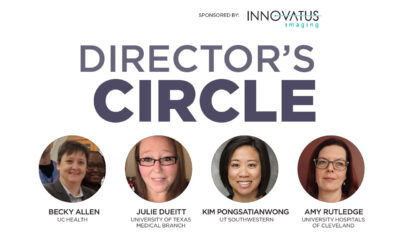By Mark Watts
 I sat at a Society for Imaging informatics (SIIM) conference years ago listening to a consultant telling the audience that a Picture Archive and Communication System (PACS) implementation is too complex for an imaging director to understand and complete. He then offered up an 18-month project plan that he would be willing to lead a hospital though for a large fee.
I sat at a Society for Imaging informatics (SIIM) conference years ago listening to a consultant telling the audience that a Picture Archive and Communication System (PACS) implementation is too complex for an imaging director to understand and complete. He then offered up an 18-month project plan that he would be willing to lead a hospital though for a large fee.
Fast forward a couple of years and with a talented motivated team, I was able to install PACS for 19 hospitals in 17 months.
This was the result of educational offering at SIIM, “Standardization of Implementation Practices and Other Market Forces.”
Market forces changed the music industry, during my lifetime.
Records, cassettes, CDs, MP3, streaming. Who will be the market disruptor in AI for imaging? Do we have a Steve Jobs yet?
Steve Jobs used a combination of technology and innovation to disrupt the music industry. It was his ability to create “useful” and user-friendly music solutions that toppled the status quo. He did not go to Capital Records, RCA or Virgin Atlantic executives and ask permission to change their world. Goody and Tower Records did not go out of business because Steve Jobs told customers not to go there.
The Internet, customer choice, MP3 players and other market forces did it. A better value proposition and lifestyle opportunity was presented. The consumer market rewarded this innovation.
As I review the efforts to introduce artificial intelligence (AI) into imaging, I do not see the “killer app” yet.
I do see the demos from IBM Watson, Zebra Technologies and Aidoc. They offer the technical, MP3 solution for imaging AI solutions. Prioritization, scheduling and reminder notifications are like the beeper, cellphone and day planner. We are still looking for the smartphone of imaging AI, a well-designed user-friendly technical platform that offers just-in-time, in workflow value added assistance. I choose the word assistance intentionally. I see AI in imaging best applied as a value add and not as a replacement.
The market forces that will usher in the fourth industrial revolution in imaging are:
- Radiology practice consolidation
- 5G networks
- Improved algorithms with bias awareness
- Institutional IT infrastructure to support “learning organizations” like Johns Hopkins
- Team-based care, Mayo Clinic model
- Health care inequalities
- CMS policies
All these factors will push the current radiology workflow to a place where efficiency will displace personal preferences. The radiologist at your hospital will not be asked, “Do you want to partner with an AI assistance?” It will be mandated like the conversion from film to PACS.
The psychological aspect of the symbiotic working relationship between a trained radiologist and AI must be part of the solution creation. The Mayo Clinic model of team care places the patient at the center of the care wheel. This change in system design allows multiple doctors to contribute to the optimized diagnosis and treatment. The pie is evenly distributed and egos/financial gain are removed from the decision-making process.
On my list of must reads is Dr. Felipe Kitamura, head of innovation in diagnostic operations at Dasa. He says, “A good AI algorithm is an algorithm that is used. When we start thinking about testing a model, one important step is providing the AI result to the radiologist in a timely manner. Sending the AI result back to PACS in an automated way is key.”
Useful, adaptive technology, innovative change management processes, value added in stream workflow will lead to a breakdown of the current antiquated power structures and unleash an AI imaging revolution.
I think one day soon a reader of this article will write an article on the time he read about the way AI adoption was too complex for an imaging director and how he worked with SIIM educational offerings and got it done.
Mark Watts is the enterprise imaging director at Fountain Hills Medical Center. He can be reached at markwattscra@gmail.com.








